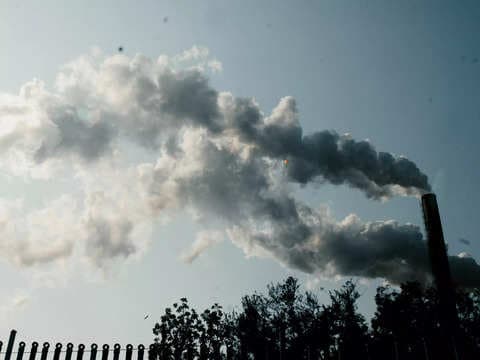However, to cope with the climate anxieties of a world teetering over the edge, it sometimes helps to take a step back and reassess what remains within our capabilities, and how far we've managed to trudge. BloombergNEF's New Energy Outlook:
Here's the obvious gist: we gotta do more, and we gotta do it now. Luckily, the report encapsulates two ways we could not only meet India's Nationally Determined Contributions for net-zero goals, we could even seek to exceed it by 2050. But it will take a mountain of effort, resources, and back-breaking policy pushing.
The first of these scenarios, called the Economic Transition Scenario (ETS), describes a world where the transition occurs in a way that makes economic sense, but also inadvertently leads to a global temperature rise of 2.6°C by 2050, not even meeting our net-zero emissions. The second (and preferred) scenario, termed the Net Zero Scenario (NZS), encapsulates achieving our net-zero ambitions by 2050, realised purely with boosted government support and private sector investment.
A major win that will fortify our green transition is the fact that new wind and solar power plants in India have already achieved a lower cost of electricity generation than new thermal power plants. The report projects that generating electricity from these renewable sources will become cheaper than the running cost of existing coal plants by the mid-2030s, which would certainly help with our dependence on the dirty fossil fuel.
However, to actualise NZS, we will need to bolster our wind and solar power plants by thirty-fold! On paper, this means expanding to nearly 3,000 gigawatts of power by 2050, a mountain compared to the molehill that was 99 gigawatts in 2021.
As imaginable as expanding to 3,000 might seem, its importance cannot be understated. The modelling shows that 80% of the electricity supplied in the country will come from solar and wind sources by 2050. Even the ETS scenario shows that India is moving towards an electric revolution, and two-quarters of its generation will come from these greener sources. We can either stay afloat with the tide, or fight towards the oil-spill away from it.
As sweet as a net-zero India dream might be, the capital required to wake up to the reality of one remains staggering. According to the report, India will need energy investments amounting to an annual average of $438 billion, or about 5% of the country's expected gross domestic product.
A lion's share of this investment comes in the form of
There is also the matter of the industrial nuisance. While India's power sector has dominated carbon emissions for a while, industrial CO2 emissions are set to surpass this by the early 2040s, the report outlines. Steel and cement production will see emissions spike by 3-5 times by mid-century. Therefore, it is imperative we deploy crucial carbon-capture technology to abate this pollution spike at the earliest.
All in all, an accelerated adoption of newer emission-slashing and capturing technology is the need of the hour if we wish to meet any of our targets. Current NDCs imply that our emissions will climb to 31% higher than 2019 levels by 2030. NZS can massively hack this figure to a measly 9%, but we need to act now.
